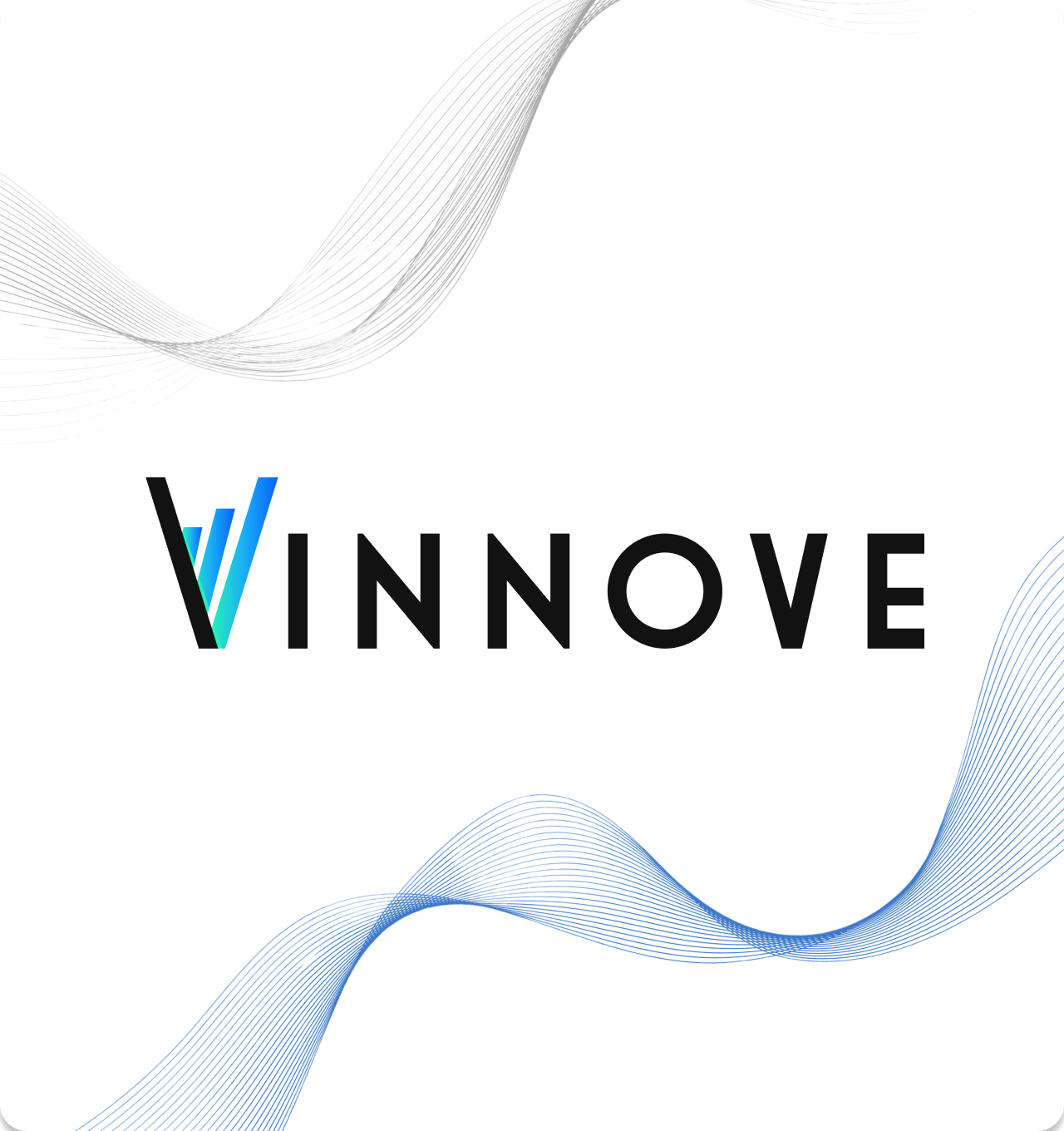ORGANIZATIONS WE SERVE
State and Local Government
We partner with state and local agencies to align their operations with their mission, bringing clarity and innovation to every solution
Federal Government
We address key challenges by starting with a clear strategy roadmap that focuses on needs before selecting appropriate technology solutions, ensuring effective, scalable results that align with their mission.
Strategy Built To Scale
No more juggling different vendors. We bring your strategy, branding, and tech under one roof. We are your trusted digital transformation partner












Get Moving

Get Clear
At Vinnove, we turn complexity into clarity. If you’re unsure about your next steps, we’ll help you see the big picture and create a strategy that aligns with your vision. By focusing on the 20% that drives 80% of the results, we simplify the path to success, helping you move faster and smarter.
What We Do:
Simple & Powerful

Strategy & Roadmapping
Clear, actionable strategies aligned with your business goals, designed to guide you toward sustainable growth.
Brand Strategies Services
Crafting brands that resonate, with human-centered design that ensures your message connects with your audience.
Web Design & Customer Experience
Creating websites that perfectly reflect your brand and captivates your audience and turns visitors into customers.
MarTech & Automation
Essential for teams aiming to scale effectively. We leverage the best SaaS tools to automate marketing, boosting efficiency and growth without the complexity
Continuous Feedback & Optimization
Get real-time insights and visual dashboards to track performance and drive ongoing improvements, keeping your business agile and on track
App Development
Creating mobile apps that engage users, boost satisfaction, and drive revenue.













View Our Case Studies

HEALTH CARE
Promoting well-being initiatives for graduate medical education participants
Branding • Strategy • Design Thinking • Prototype • Landing Page • App & Portal Development • –Data Analytics
EDUCATION
Embracing Texas’ Past, Present, and Future
Branding • Strategy • Development • Website Introduction
Latest Blogs

Reimagine Connection: The 3 C’s to Digital Strategy Excellence
Reimagine Connection: The 3 C’s to Digital Strategy Excellence In today’s online world, billions of users compete for attention. A good digital communication strategy is essential. It defines your place in the market. When your website is a true reflection of your brand, it becomes more than a digital storefront. It becomes the foundation of your reputation, the reason people remember you, and, ultimately, why they call you to work with them. Your website should tell your story, communicate your purpose, and position you as a trusted authority. When every element of your online presence is aligned with your values, it creates a powerful ripple effect: people don’t just find you; they seek you out. 3 C’s: Connection, Care, and Clarity You may have heard of other “3 C’s” frameworks in business or marketing, like Company, Customers, and Competition or Content, Communication, and Context. These ideas are helpful and have their place. At Vinnove, we made our own version of the 3 C’s: Connection, Care, and Clarity. We built on these traditional ideas to make them more useful for today’s digital world. The way businesses communicate online is different, it’s fast and competitive. That’s why our 3 C’s Framework focuses on building real connections. It shows genuine care and makes messages clear and easy to understand. It doesn’t replace the other models, it works alongside them to help businesses stand out and connect in a more human way. But achieving this requires intentionality, authenticity, and a clear understanding of your value proposition. The Coffee Shop Analogy: Why Clarity and Connection Matter Imagine walking into a bustling coffee shop. On one side, someone is talking loudly to everyone. They are sharing random messages that lack clarity and purpose. The audience glances over but quickly tunes out due to the absence of value in what’s being said. Now, imagine someone else sitting at a table, speaking calmly and empathetically to one person. Their words resonate, their intention to help is clear, and the conversation feels focused, authentic, and impactful. This is the difference between poor and effective digital communication strategy. An unfocused and cluttered website or social media campaign is like that first person shouting into the void. A good strategy, backed by a clear message, works like a friend. It builds strong connections that lead to results. Why a Strong Digital Communication Strategy Is Essential A digital strategy is your blueprint for reaching, engaging, and converting your audience. It defines your goals and objectives, shapes your key messages, and ensures consistency across your communication efforts. Without it, businesses risk confusing their audience with fragmented messages, poorly designed communication channels, or a lack of focus. The result? Missed opportunities for lead generation and a loss of trust in your brand. Building the 3 C’s Into Your Strategy 1. Connection: Speak Directly to Your Audience Connection is about more than reaching people, it’s about understanding them. When your messaging reflects your audience’s pain points, challenges, and aspirations, it builds trust and fosters meaningful engagement. How to Build Connection: Lead With Intention: Make sure your website answers the key questions your audience asks, like, “What do you do?” and “How can you help me?” Relatable Messaging: Use real-life scenarios or customer pain points to show you understand their challenges. For example, “Struggling to meet deadlines? We simplify the process so you can focus on what matters most.” Visual Storytelling: Work with web developers to create visually engaging designs that draw people in. Taglines like “Simplify Your Workflow, Save More Time” are more impactful when paired with clean visuals. 2. Care: Empathy Drives Trust Care is about showing your audience you value them as people, not just potential customers. It’s the difference between selling a product and offering a solution that genuinely helps. When your communication reflects empathy, your audience feels heard, seen, and valued.trust and fosters meaningful engagement. How to Build Care: Create Value-Driven Content: Share blog posts, case studies, or tutorials that directly address your audience’s concerns. For instance, “5 Ways to Simplify Your Small Business Finances” can resonate deeply with your audience. Offer Personalized Solutions: Tailor your communication to specific audience segments. Personalized emails and landing pages show you care about individual needs. Prioritize User Experience: Collaborate with web developers to design an intuitive website that respects your audience’s time and effort. 3. Clarity: Simplicity Converts Confusion is the enemy of action. If your audience can’t quickly understand what you do or how you can help, they’ll move on. Clarity is about simplifying your message and ensuring it’s consistent across all platforms. How to Build Clarity: Simplify Your Value Proposition: Your tagline and website header should clearly state what you offer. For example: “Empowering Small Businesses With Easy Financial Tools.” Cohesion Across Channels: Ensure every piece of content from your website to social media reinforces the same core message. Visual Consistency: Partner with web developers to create layouts that guide visitors effortlessly and make your message visually clear. The Role of Copy Writers in Simplifying Messaging At Vinnove, we understand that a well-designed website isn’t just a digital storefront, it’s a strategic tool that reflects your brand’s purpose and connects you with your audience. Our copy writers, designers and web developers play a key role in creating websites that prioritize clarity, connection, and care. They ensure your site is not only visually appealing but also intuitive and effective in delivering your message. How Web Developers Enhance Your Digital Strategy Streamlined Navigation: Our web developers design intuitive layouts that help visitors find what they need effortlessly. This keeps them engaged and guides them toward meaningful actions. Tagline Placement: Web developers strategically position your value proposition like “Aligning Businesses With Purpose and Strategy” to ensure visitors immediately understand your unique offering. Strategic Visual Design: With the expertise of web developers, every design element is optimized to enhance the user experience, encouraging actions like signing up for a newsletter, scheduling a consultation, or downloading resources. Purpose: The Foundation of Your Strategy When your purpose

How to Be More Productive: RICE Score & Time Boxing in Action
How to Be More Productive: Master RICE & Time Boxing Strategies The other day, I stumbled across an old to-do list from 2019, tucked away in a notebook I hadn’t opened in years. It was a mess of unrelated tasks, each screaming for attention but offering no real direction. At the time, I believed that crossing off as many tasks as possible was the secret to productivity. But looking back, I’ve realized that true productivity isn’t about doing more it’s about saying no to what doesn’t align with your goals Turning Chaos into Clarity What used to be a chaotic list of “things to do” has transformed into a deliberate system designed to align with my overarching goals. Now, I focus on strategies that help me get things done and ensure that I’m making meaningful progress. If you’re wondering how to be more productive in a way that aligns with your priorities, I’ve got two game-changing frameworks to share: time blocking and the RICE framework for prioritization. Combining Time Boxing and RICE The combination of time boxing and the RICE framework is a simple yet powerful way to understand how to be more productive. RICE helps you decide what’s most important, and time boxing ensures you focus on it. RICE answers the “what”: Which tasks will have the biggest impact with the least effort? Timeboxing answers the “when”: When will you dedicate focused time to these priorities? Why it works: You use RICE to rank your tasks, then timebox your schedule to make real progress. It’s not just about doing more; it’s about doing what matters most. 1. RICE Framework: Prioritize The RICE framework helps you evaluate tasks and projects based on four factors: Reach, Impact, Confidence, and Effort. This structured approach ensures you’re investing time and resources where they’ll have the greatest return, helping you discover how to be more productive by focusing on what matters most. 💡 How RICE Works: Reach: How many people or projects will this task benefit? Impact: On a scale from low to high, how much will this task contribute to your overarching goals? Confidence: How certain are you that this task will achieve its desired outcome? Effort: How much time, energy, and resources will this task require? 💡 Use the formula: (Reach × Impact × Confidence) ÷ Effort = Priority Score 💡 Example: Imagine you’re deciding between creating a new marketing campaign or refining your sales strategy: Marketing Campaign: Reach (1,000) × Impact (3) × Confidence (80%) ÷ Effort (5) = 480 Priority Score Sales Strategy: Reach (500) × Impact (4) × Confidence (70%) ÷ Effort (2) = 700 Priority Score The higher score for the sales strategy indicates it’s the more valuable task to tackle first. Using the RICE Scoring Framework to Prioritize Initiatives When we work on initiatives like crafting a go-to-market strategy, the RICE framework helps us evaluate and choose the proper channels to maximize success and be more productive. Reach: For a go-to-market strategy, we consider how many people or projects a specific channel can benefit. For example, a targeted social media campaign might reach thousands, while a niche partnership might reach only hundreds. Impact: We assess how much each channel will contribute to our overarching goal. A high-impact channel significantly drives brand awareness or sales, even with a smaller audience. Confidence: Confidence is crucial—we ask how certain we are that the chosen channel will deliver results. Data from past campaigns, market research, or industry benchmarks can boost this confidence. Effort: Finally, we evaluate the time, energy, and resources each channel requires. Creating a webinar series requires substantial effort, whereas repurposing existing content for a newsletter requires less. For instance, when evaluating two potential marketing channels: Example: Choosing Between Two Marketing Tasks Imagine you need to decide between two marketing tasks: Launching a new email campaign Improving your website’s call-to-action (CTA) buttons Here’s how the RICE framework helps: Reach: The email campaign will reach 2,000 subscribers, while improving the CTA buttons will impact 10,000 daily visitors. Impact: The email campaign has a medium impact (4), as it drives potential leads. Improving CTA buttons has a high impact (5), directly boosting conversions. Confidence: You’re 70% confident the email campaign will increase engagement, but you’re 85% sure better CTA buttons will lead to more sales. Effort: The email campaign will take 3 weeks to create and launch, while the CTA improvement requires just 1 week to design and implement. Calculation: Email Campaign: (2,000 × 4 × 70%) ÷ 3 = 1,867 CTA Buttons: (10,000 × 5 × 85%) ÷ 1 = 42,500 Result: Improving the CTA buttons scores significantly higher, so it should be your top priority. Why It Works: Whether you use the RICE framework in detail or as a quick mindset shift, it’s a powerful way to become more productive. Even asking, “Is this a low-effort, high-impact task?” can help you stay focused on what matters. 2) Timeboxing: Execute Focus on Results, Not Tasks Traditional to-do lists focus on completing individual tasks, often leading to a fragmented and overwhelming day. Timeboxing based on objectives, on the other hand, shifts the focus to outcomes. It involves allocating specific blocks of time to work toward achieving a clear purpose, helping you prioritize progress over mere task completion. Key Features of Timeboxing Based on Objectives: 1. Outcome-Oriented: Instead of listing tasks, you define clear objectives during each time box. Example: Instead of writing “reply to emails” on your list, you set an objective like “clear the inbox to focus on top-priority client responses.” 2. Prioritization: You identify the most critical objectives for the day and allocate time accordingly. Example: If your objective is to finalize a client proposal, you dedicate a focused 90-minute block to drafting and revising it. 3. Flexibility: While you have a set time limit, you can adapt your approach within the time box to achieve the objective. Example: During a time box for creating a presentation, you might shift from slide design to refining your narrative

Scale Effortlessly: 5 Strategies to Stay True to Your Purpose
Scale Effortlessly: 5 Strategies to Stay True to Your Purpose In the early days of working with startups, I often found myself answering the same question: “What if someone else takes my idea?” I’d tell them: “No one else can replicate this if you stay true to your Purpose and listen to your customers.” This advice was more than reassurance. It was the foundation for meaningful scaling. Let’s explore why purpose and consumer insights are the secret weapons for building businesses that scale effortlessly: 1. Your Core Purpose Fuels Innovation and Market Differentiation Your core purpose is the “why” behind your business. It’s not only about profit. It’s also about the value your company provides to customers. Additionally, it’s about the impact you want to make in the world. No two companies share the same DNA, and no two businesses should follow the same path. The key? Stay true to your Purpose and focus on your customers; you’ll unlock business growth while creating a high-growth business model. Questions to help you connect with your Purpose What’s Your Purpose? Why did you start your business? What do you do differently from others in your industry? What strengths set you apart from competitors? How big is the potential market for your product or service? Your core purpose is the foundation of long-term success. It provides clarity and direction, ensuring your business doesn’t just grow—it scales with Impact. A strong purpose drives increasing revenue, inspires your team, fuels innovation, and creates alignment across your company culture. 💡 Example: LEGO’s Purpose, “to inspire and develop the builders of tomorrow,” goes far beyond selling toy bricks. Initiatives like LEGO Play Day foster creativity and create strong emotional bonds with customers. This connection transforms loyalty into steady sales, solidifying LEGO as a global leader in the toy industry. See the story on how LEGO turned Play Day into a global phenomenon. 2. Strategy: Your Playbook for Scaling A purpose alone won’t scale your business—it needs a strategy to bring it to life. Strategy is the plan that turns your Purpose into clear actions. It helps prioritize resources and aligns your team with shared goals. Without it, scaling efforts often lead to chaos instead of growth. Start with Strengths: Identify what your business does best and build your strategy around those strengths. Be Intentional: Not all growth is good growth. Choose opportunities that align with your Purpose and contribute to long-term sustainability. 💡 CEO Tip: Use data to guide your strategy. For example, analyze which services or customer segments drive the highest ROI and focus your efforts there. 1. If Not Us, Then Who? Take ownership of your Purpose. This is the only way your business can fulfill it the way your business can. Ask yourself, “If we don’t solve this problem for our customers, who will? 2. Start With Small Wins. Like LEGO, begin with initiatives that directly reflect your Purpose and resonate with your audience. Pilot the idea, learn, and iterate. 3. Create Purpose-Driven Experiences. Start with your website—these days, it’s where your customers go first to learn about you. Make sure it clearly communicates your purpose, value, and what sets you apart. How can your website create an experience that truly connects with your audience? 4. Make sure it is easy to recognize. Tie your Purpose to an initiative that becomes part of your brand’s identity. Ensure your audience knows it’s you behind the innovation. 3. Why It Works: Customers Over Competition Forget the competition. Successful businesses don’t obsess over rivals—they stay obsessed with their customers. When you align your business strategies with your customers’ needs, you find opportunities others can’t see. That’s where the company can begin scaling effortlessly. 💡 CEO Tip: Use data to guide your strategy. For example, analyze which services or customer segments drive the highest ROI and focus your efforts there. Build a Feedback Loop to Stay Ahead 1. Listen: Regularly gather feedback through surveys, reviews, and direct conversations. 2. Analyze: Look for patterns in customers’ wants and where they face challenges. 3. Adapt: Use those insights to refine your offerings and improve their experience. 4. Act: Communicate to customers about your changes based on their feedback. 4. Saying “No” to Stay Focused One of the hardest lessons for CEOs is learning the power of “no.” Opportunities can seem endless, but not all align with your Purpose or strategy. Saying no allows you to focus your resources, protect your brand, and scale intentionally. 1. Why It Matters: Every no clears the way for a yes that aligns with your Vision. 2. When to Say No: If an idea doesn’t align with your Vision, strengthen your core strengths, or support your strategy, it’s a distraction. 💡CEO Tip: Treat every “yes” as a time, energy, and resource commitment. Before agreeing, ask yourself: Does this move us closer to our long-term Vision, or is it just a distraction? Remember, saying “no” to the wrong opportunities creates space for the right ones to thrive. 5. Alignment: The Key to Scaling Without Chaos Everyone, from your leadership team to your frontline employees, must work toward the same goals. Misalignment leads to inefficiencies, mixed messaging, and a diluted customer experience. What Alignment Looks Like 1. Your teams understand and share your company’s Purpose: Everyone is aligned with the “why” behind your business, ensuring consistent decision-making and a unified direction. 2. Processes and systems are optimized to support your growth strategy: Efficient workflows and tools are in place, enabling scalability without chaos. 3. Your customers experience consistent value that reflects your core strengths: From first interaction to ongoing support, every touchpoint reinforces trust and delivers on your brand promise. 4. Your digital presence communicates a unified message: Your website, social media, and other online channels all work together, amplifying your Impact and delivering a cohesive brand experience. 💡💡CEO Tip: Take a page from Patagonia’s playbook—regularly communicate your Purpose and strategy to your team to keep everyone aligned. Connect daily actions with your broader mission.
Scale Effortlessly: 5 Strategies to Stay True to Your Purpose
How to Be More Productive: RICE Score & Time Boxing in Action
Building a unique brand identity to stand out in the market









